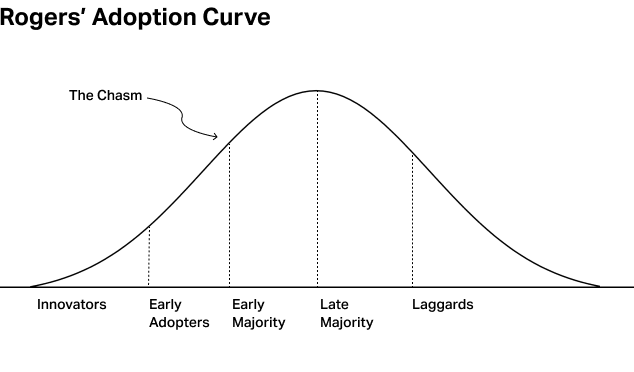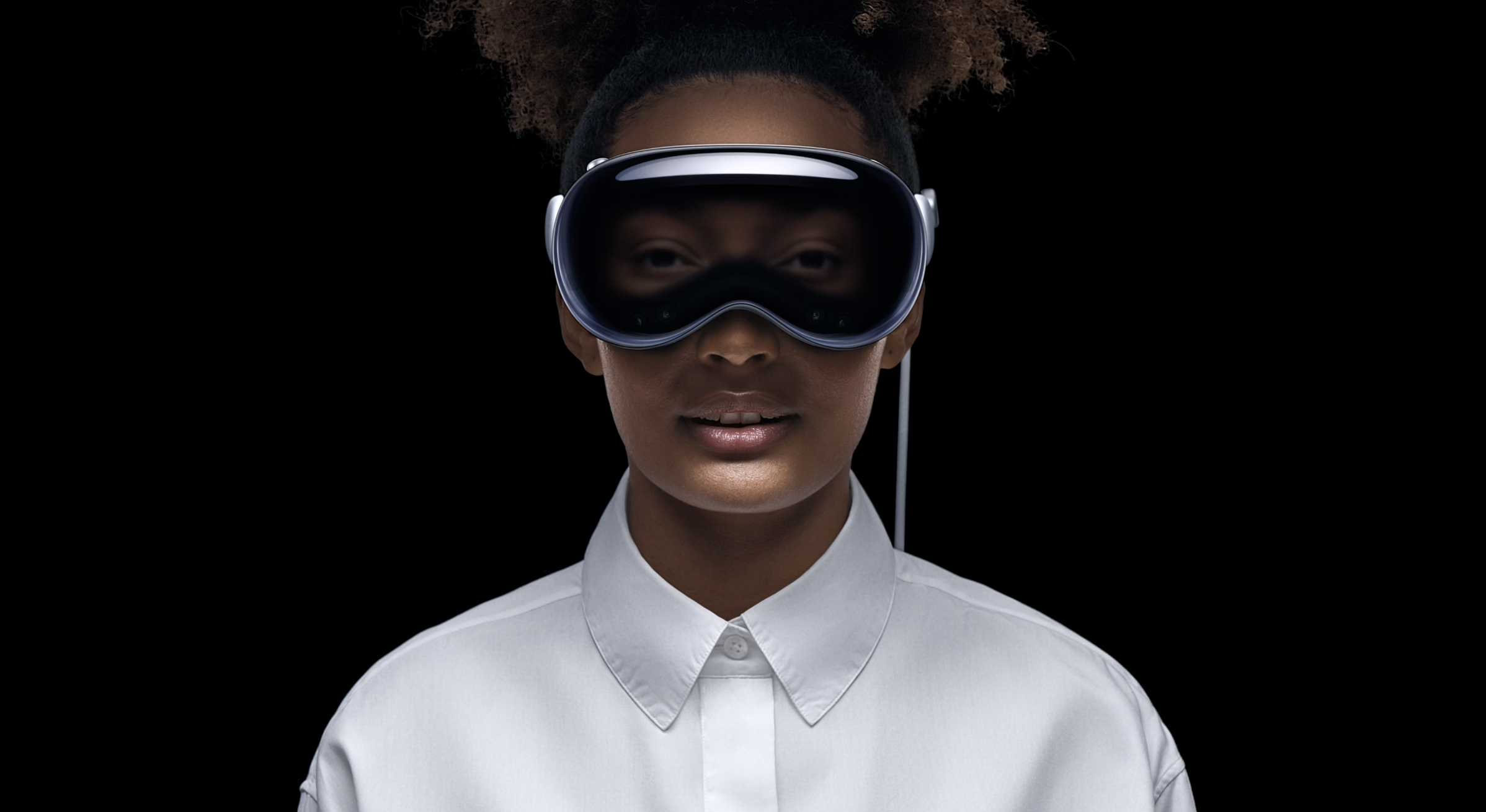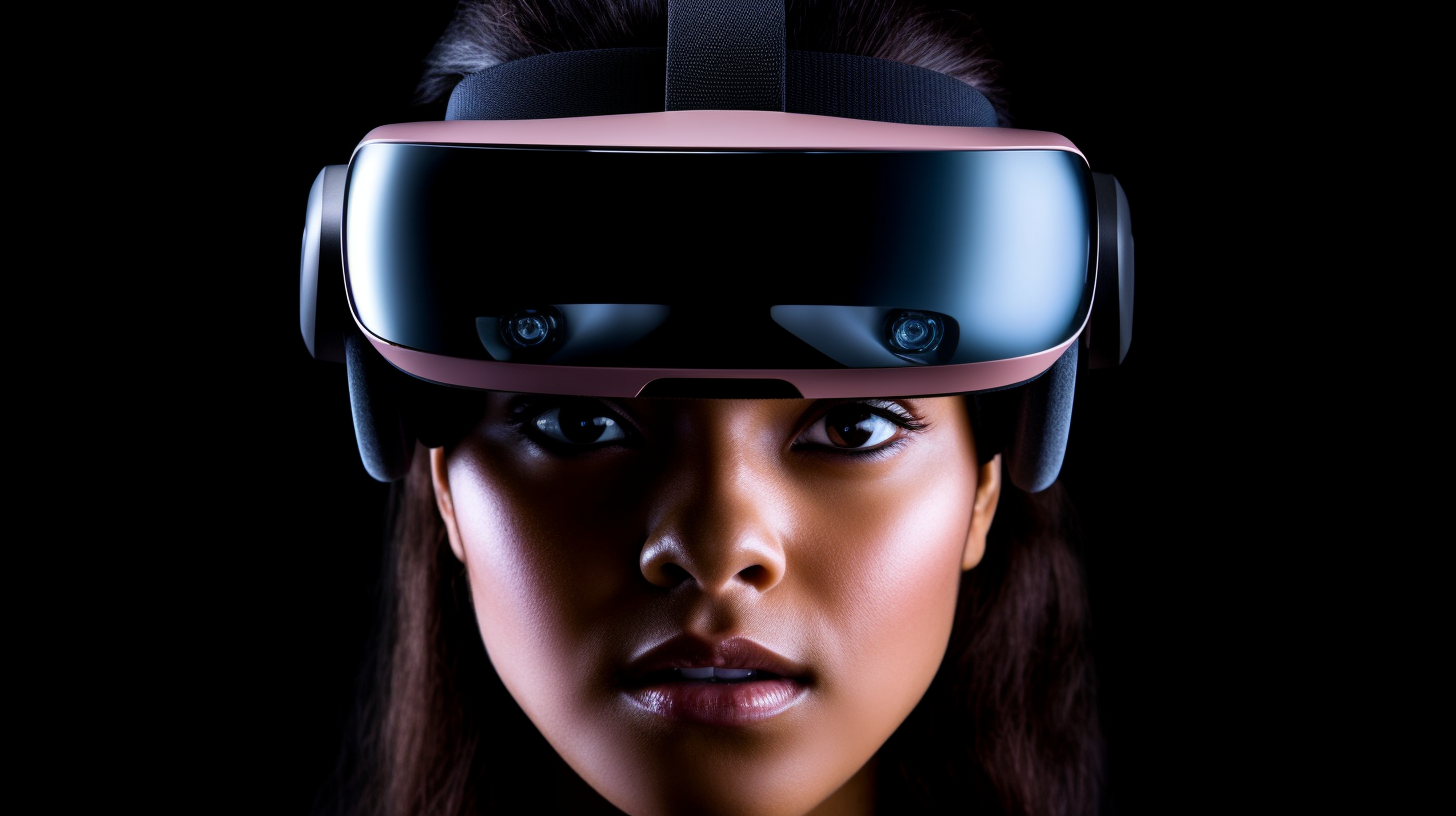Reading Time: About 10 minutes
By now, you’re probably well aware of Apple’s launch Monday of Vision Pro, its much-anticipated entry into the AR/VR category. It was covered by every major media outlet and all of the best technology blogs. In his excellent blog, Stratechery, Ben Thompson provided an optimistic perspective.
I had the good fortune of using an Apple Vision in the context of a controlled demo—which is an important grain of salt, to be sure—and I found the experience extraordinary.
The high expectations came from the fact that not only was this product being built by Apple, the undisputed best hardware maker in the world, but also because I am, unlike many, relatively optimistic about VR. What surprised me is that Apple exceeded my expectations on both counts: the hardware and experience were better than I thought possible, and the potential for Vision is larger than I anticipated. The societal impacts, though, are much more complicated.
I am not as optimistic about VR as Thompson is. I’ve been taking pitches from VR developers since at least 2013. It has always been the same refrain: this will be VR’s breakthrough year. It never was. What has been even more discouraging is how consistently these developers fail to answer two simple questions: who is this for and why do they need it? Most of the time, the reply I get is:
- Everyone
- Because it’s cool
I have been unconvinced that consumers want to strap on a headset and enjoy the coolness of an “immersive experience” that is a novelty to most and a source of nausea to some. To me, the technology has failed to prove a valid and scalable use case. The unmet consumer need feels about as palpable as the need for 3D movies, another product that has been incessantly pitched to me as “about to hockey stick.”
I am not here to praise nor bury Vision Pro. This dispatch isn’t an indictment of virtual or augmented reality as a product category. This is a story about positioning and how it can sometimes work best when it lowers or reframes expectations, particularly in pursuit of driving consumer adoption of innovative technologies.
Able to Leap Tall Buildings in a Single Bound
Everrett Rogers published a theory of consumer adoption of innovations in his 1962 book, Diffusion of Innovations. It begat the now infamous Rogers’ Adoption Curve that divides a market for an innovative product into five consumer segments: Innovators, Early Adopters, Early Majority, Late Majority, and Laggards. This theory is now dogma in the tech industry. Its lesson is simple: a good technology may easily penetrate the Innovator and Early Adopter segments, but the money is in the majority, and convincing them is the hardest part—so hard that in 1991 Geoffrey Moore wrote a whole book about the challenge, appropriately titled Crossing the Chasm.

VR is still waiting for someone to bridge the gap. Mark Zuckerberg bet the farm on his vision to be the company that will do so. While Meta’s Oculus platform owns the lion’s share of the existing market for VR headsets today, that market is mostly a cohort of Innovators and Early Adopters. The one sub-segment that you could argue qualifies as Early Majority is the gaming market, where demand for headsets has become more pronounced, especially as the price of entry has dropped to about $300. In 2021, Meta shipped over 10 million Quest 2 headsets, according to Qualcomm. That same year Nintendo, Sony, and Microsoft shipped over 45 million game consoles. Meta’s market penetration is impressive and promising but hardly proof that VR has entered a phase in which it is diffusing the mass market the same way that iPhone did after its introduction in 2007.
Crossing the chasm for VR is a conundrum because it’s hard to make the case that these devices have become indispensable, even to gamers. As a researcher, I sometimes measure how much a user really needs a product through deprivation. The research methodology is exactly what it sounds like. We deprive the user access to the product and interview or survey them at periodic intervals to measure how acutely they feel the pain of not being able to use it or have it in their life. Take someone’s iPhone away from them for a few days and they are in agony. Take Twitter away and they are more likely to tell you life has improved (but that’s another post).
The problem with VR is that most consumers are indifferent. The experience with the product does not cause enough discomfort when it is absent. Worse, the technology can create more challenges than it resolves—such as navigating surroundings, interacting with those in one’s physical presence, and managing multiple peripherals.
All of these issues were addressed in Apple’s launch keynote on Monday. More importantly, only a small fraction of the 45 minutes dedicated to Vision Pro at the company’s annual WWDC event featured the gaming prowess of the device. The rest focused on how the device could fit into a user’s life right now. And while some analysts have correctly remarked that many capabilities Apple evangelized have been available on other devices (including Quest) for some time, I think they would all agree that Apple’s legendary design ethos and slick integration of hardware and software started a fresh conversation about AR/VR’s potential consumer utility.
Seeing is Believing
While Apple served its fair share of hyperbole—the overuse of the word magical was irritating, as was the cringeworthy overproduction of each product manager’s briefing—it was the subtle branding choices that stood out to me. First, they didn’t position the device as a headset. It was the company’s entry into spatial computing. To emphasize this point, the company’s product managers and engineers reminded us that this device incorporated technological advances that required more than 5,000 patent filings.
In the grand tradition set by Steve Jobs, Vision Pro was revealed last in the program order. Yet this ceremonial unveiling made even more sense because it served as a denouement to the preceding hour and fifteen minutes of update presentations for products we already rely upon, especially iOS. Apple contextualized these updates with an intriguing new use case. Vision Pro was positioned as a natural next step for those who want to get the most from Apple’s expanding ecosystem. In fact, Apple took great pains to show how Vision Pro will complement the indispensable technologies it has created that crossed the chasm years ago. Vision Pro resurrected the original Macintosh’s positioning as “an advanced productivity tool.”
If I had to summarize one proof point in favor of Vision Pro’s success it would be the increasing importance of displays. Where once we tolerated low-resolution, we’re now looking down on anything that isn’t at least 4K, and after COVID, even home users are moving towards having more than one monitor for a computer. Platformer’s Casey Newton argued this was one of the strongest selling points of Vision Pro.
Eventually, I think, it seems obvious that you’ll be able to find a better display in AR or VR than you can on the shelves at Best Buy. Maybe it’s better because it’s bigger than the physical monitors you can afford. Maybe it’s better because you can port it all around your house, and position it however you like. Maybe it’s better because it fits in your bag when you travel.
Whatever it is, I think Apple or someone else can make that happen.
Lessons from Robots
The Vision Pro launch and its influence on the adoption of VR reminded me of another category that has struggled to cross the chasm: robots. Sony launched AIBO in 1998. It stood for Artificial Intelligence roBOt. Sculpted to look like a toy dog, AIBO was positioned as a pet, not a robot. Harvard’s Youngme Moon has written about AIBO extensively and noted that when AIBO launched, Sony’s management bragged that the product didn’t do anything useful at all. Yet the first generation of the product sold out in minutes, crashing servers in Japan and the US, with a price tag of $2,500. This was 1998, mind you! Setting the expectation that AIBO was a pet and not a robot reframed its value proposition.

The AIBO case hints at the cleverness of Apple’s positioning for Vision Pro. When Sony launched AIBO it knew that it would be decades before robots lived up to consumer expectations. Imagine, right now, what you would expect a robot to do for you. It probably resembles something similar to a droid from Star Wars, fixing things around the house or performing routine tasks. Yet when AIBO launched the technology didn’t promise or deliver on any of these expectations. The technology that was available at the time worked pretty poorly. AIBO sometimes didn’t respond to voice commands from its owner, like “sit” or “speak.” Speech recognition technology was in its infancy (this was more than a decade before the launch of Siri). Sony positioned this bug as a feature. By positioning AIBO as a pet and not a robot, users fell in love with the dog’s “independent spirit” that sometimes ignored your commands.
Similarly, by positioning Vision Pro as an integral component of the Apple ecosystem you’ve come to rely upon, Apple is reframing expectations. Despite CEO Tim Cook’s proclamation that the device is “revolutionary,” what Apple really did was pitch the faithful on an experimental approach to get more from existing Apple devices and platforms. While Zuckerberg wants you to leave the world you know to explore the metaverse, Apple wants to make its ecosystem more seamlessly integrated into your real world.
Can we claim that Sony crossed the chasm with AIBO? No (though it is still on the market). The closest most of us have to a robot in our home is a Roomba, notably not made by Sony. Yet, Sony’s management team considered the project a success because it gave them a head-start on developing the technology that would one day cross the chasm as a new market.
Pricing as a Positioning and Targeting Strategy
There are two interesting lessons from the AIBO launch. The first is pricing. Most critics of Monday’s launch have derided the device’s $3,499 price tag. Yet, this might be one of the smartest components of the position.
Mike Rockwell, the product manager for Vision Pro, stopped short of arguing that the price was a fraction of what one would have to pay for a state-of-the-art TV, surround sound system, and a powerful computer with a couple of high definition displays and cameras. Even Apple isn’t that bold. Contrary to what many pundits are saying (notably Mark Zuckerberg), I think the pricing creates a useful self-selection bias to attract users who will help advance technology that isn’t ready for the masses quite yet.
Sony deployed a similar strategy with AIBO. The user who was willing to pay $2,500 for a robotic dog that does nothing useful and sometimes ignores you is a user who is invested in making the product a success. Had Sony opted for aggressive, penetration pricing (as some of its executives pushed for), it risked premature death and the opportunity to capture meaningful consumer evaluation. It’s easy to give up and discard a toy dog that cost $99. It isn’t so easy to give up when the price is 25 times as much.
AIBO owners formed user groups and exchanged tips on how to train their pets—providing valuable insight on the R&D agenda for the next generation of products to Sony’s engineers. The consumers who fork over $3,499 to secure Vision Pro when it ships next year will be inclined to focus on the virtues and not the flaws of their purchase. They will find ways to use the product that Apple probably couldn’t anticipate in a controlled, laboratory setting. With any disruptive technology, there comes a moment in time when the only way to move forward is to unleash the product to customers and learn from their actual usage. Pricing is a viable means to ensure that the users who participate in this process care.
Not Exactly What You Speculate
Apple’s positioning of the device as a new kind of computer also affects the product’s targeting strategy. It is likely to be more mainstream than the existing consumers of VR technology. Rather than identifying as hard-core gamers, Apple’s device will likely attract the company’s super-users who have demonstrated in the past that they can drive downstream adoption.
Going back to Sony, AIBO attracted much older users than many expected for a robot toy. One would imagine the target audience was mostly tech-loving gadget hounds or parents buying a toy for their kids, yet a lot of the device’s were purchased for elderly relatives to provide companionship. Unlike a real dog, AIBO didn’t need to go out on walks, nor did its users have to worry about it soiling the carpet. The only feeding it needed came from an electrical outlet. Sony’s market research revealed that the robotic canine was beloved by these older users, who developed true attachment to the product and treated it as a family member. This is important because, traditionally, the further you move to the right on Rogers’ Adoption Curve, the older the user. Yet, in AIBO’s case this was not true. Many of the early adopters were demographically more mature. In that context, one might argue that AIBO crossed the chasm, although on a smaller scale. It leapt from Early Adopters to Laggards in a single bound.
It is here that I’m curious about Apple Vision Pro. Which seems like a better bet to cross the chasm?
- A gaming and entertainment peripheral that promises an immersive experience in new worlds; or,
- A new kind of computer that extends the technology we already know and love into a new dimension of our real world?
Admittedly, both require willing suspension of disbelief, but I think the future that Apple shared on Monday can’t be dismissed quite as easily as some are trying. There were aspects that gave me pause. I will be very curious to see how folks react to EyeSight, the technology that allows other people around you to see a digital representation of your eyes when you are using the device. I am reserving judgment until I see it in action, but my first reaction when I watched the launch video was not comforting.

Distance Vision Required
Will I buy the product? Probably not. At least not right away. Over my lifetime I have often been an early adopter of Apple’s Tech. It hasn’t always gone well. When I bought a first generation iPhone I was summarily mocked because it didn’t connect to much of anything, especially my company’s email servers. I carried two phones with me for a couple of years to maintain productivity. That investment eventually paid out. But not all Apple innovations persuaded me to be first in line. I waited for years to buy an Apple Watch, and only then because it was suggested by a fitness trainer. I now wear it almost every day. It unlocks my computer. It untethers me from my phone. It lets me buy a coffee and groceries and any other thing that can be purchased with contactless payment networks. It tracks my workouts, reminds me when an appointment is approaching, and, of course, shows me the time. The Apple Watch failed to enter my consideration set at first, but it won me over for the same reason I think Vision Pro might eventually persuade a broader market: because life with it could be easier and more enjoyable than life without it. The path to proving that is positioning it as a step forward for people who love “all things Apple,” and that’s exactly what Apple did on Monday.

